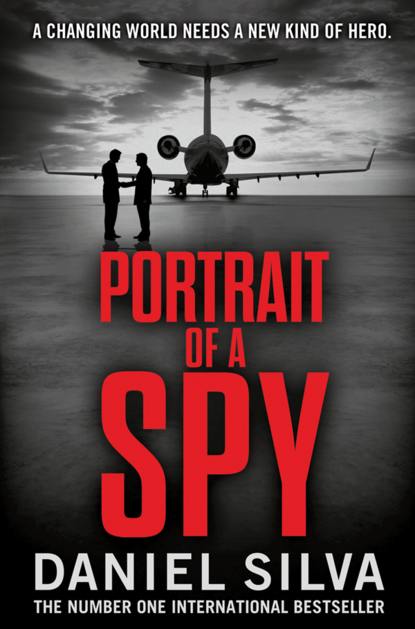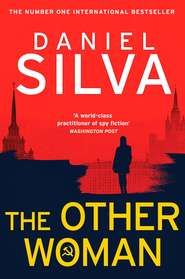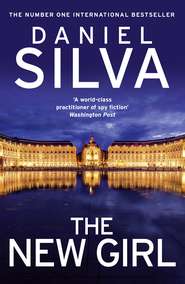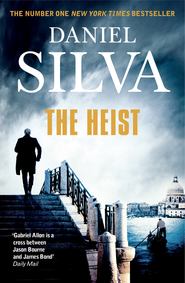По всем вопросам обращайтесь на: info@litportal.ru
(©) 2003-2024.
✖
Portrait of a Spy
Настройки чтения
Размер шрифта
Высота строк
Поля
“When is this going to end?” Isherwood asked, shaking his head in disgust. “When in God’s name is this madness going to end?”
“You should know better than to ask a question like that, Julian.” Gabriel lowered his voice and added, “After all, you’ve had a ringside seat at this war for a very long time.”
Isherwood gave a melancholy smile. His backbone-of-England surname and English scale concealed the fact that he was not, at least technically, English at all. British by nationality and passport, yes, but German by birth, French by upbringing, and Jewish by religion. Only a handful of trusted friends knew that Isherwood had staggered into London as a child refugee in 1942 after being carried across the snowbound Pyrenees by a pair of Basque shepherds. Or that his father, the renowned Paris art dealer Samuel Isakowitz, had been murdered at the Sobibor death camp along with Isherwood’s mother. Though Isherwood had carefully guarded the secrets of his past, the story of his dramatic escape from Nazi-occupied Europe had reached the ears of Israel’s secret intelligence service. And in the mid-1970s, during a wave of Palestinian terrorist attacks against Israeli targets in Europe, he was recruited as a sayan, a volunteer helper. Isherwood had but one assignment—to assist in building and maintaining the operational cover of an art restorer and assassin named Gabriel Allon.
“Just keep one thing in mind,” Isherwood said. “You work for me now, not them. This isn’t your problem, petal. Not anymore.” He aimed his remote at the television and the mayhem in Paris and Copenhagen vanished, at least for the moment. “Let’s have a look at something beautiful, shall we?”
The limited space of the gallery had compelled Isherwood to arrange his empire vertically—storerooms on the ground floor, business offices on the second, and on the third, a glorious formal exhibition room modeled on Paul Rosenberg’s famous gallery in Paris, where young Julian had spent many happy hours as a child. As they entered the room, midday sun was slanting through the overhead skylight, illuminating a large oil painting propped on a baize-covered pedestal. It was a depiction of the Madonna and Child with Mary Magdalene, set against an evening backdrop, quite obviously of the Venetian School. Chiara removed her car-length leather coat and sat on the museum-style ottoman at the center of the room. Gabriel stood directly before the canvas, one hand resting on his narrow chin, his head tilted to one side.
“Where did you find it?”
“In a great limestone pile along the Norfolk coast.”
“Does the pile have an owner?”
“Insists on anonymity. Suffice it to say he descends from a family of title, his property holdings are enormous, and his cash reserves are dwindling at an alarming rate.”
“So he asked you to take a few paintings off his hands to keep him afloat for another year.”
“At the rate he goes through money, I’d give him two months at the outside.”
“How much did you pay for it?”
“Twenty thousand.”
“How charitable of you, Julian.” Gabriel glanced at Isherwood and added, “I assume you covered your tracks by taking a few other pictures as well.”
“Six worthless pieces of crap,” Isherwood confessed. “But if my hunch about this one is correct, they were well worth the investment.”
“Provenance?” asked Gabriel.
“It was purchased in the Veneto by one of the owner’s ancestors while he was doing his Grand Tour in the early nineteenth century. It’s been in the family ever since.”
“Current attribution?”
“Workshop of Palma Vecchio.”
“Really?” asked Gabriel skeptically. “According to whom?”
“The Italian art expert who brokered the sale.”
“Was he blind?”
“Only in one eye.”
Gabriel smiled. Many of the Italians who had advised British nobility during their travels were charlatans who did a brisk trade in worthless copies falsely attributed to the masters of Florence and Venice. Occasionally, they erred in the opposite direction. Isherwood suspected that the painting on the pedestal fell into the second category. So, too, did Gabriel. He dragged the tip of his forefinger over the face of the Magdalene, dislodging a century’s worth of surface grime.
“Where was it hung? In a coal mine?”
He picked at the heavily discolored varnish. In all likelihood, it was composed of a mastic or dammar resin that had been dissolved with turpentine. Removing it would be a painstaking process involving the use of a carefully calibrated mixture of acetone, methyl proxitol, and mineral spirits. Gabriel could only imagine the horrors that awaited him once the old varnish had been stripped away: archipelagos of pentimento, a desert of surface cracks and creases, wholesale paint losses concealed by previous restorations. And then there was the condition of the canvas, which was sagging dramatically with age. The remedy was a relining, a perilous procedure involving the application of heat, moisture, and pressure. Any restorer who had ever performed a relining had the scars to prove it. Gabriel had once destroyed a large portion of a painting by Domenico Zampieri by using an iron with a faulty temperature gauge. The fully restored painting, while pristine to the untrained eye, was definitely a collaborative effort between Zampieri and the Studio of Gabriel Allon.
“Well?” asked Isherwood again. “Who painted the bloody thing?”
Gabriel made a show of deliberation. “I’ll need X-rays to make a definitive attribution.”
“My man is dropping by later this afternoon to take the pictures. But we both know that you don’t need them to make a preliminary attribution. You’re like me, petal. You’ve been around paintings for a hundred thousand years. You know it when you see it.”
Gabriel fished a small magnifying glass from his coat pocket and used it to examine the brushstrokes. Leaning slightly forward, he could feel the familiar shape of a Beretta 9mm pistol digging into the flesh of his left hip. Having worked with British intelligence to sabotage the Iranian nuclear program, he was now permitted to carry a weapon at all times for protection. He had also been granted a British passport, which he was free to use for foreign travel, provided he was not working for his old service. There was no chance of that. The illustrious career of Gabriel Allon was finally over. He was no longer Israel’s avenging angel. He was an art restorer employed by Isherwood Fine Arts, and England was his home.
“You have a hunch,” said Isherwood. “I can see it in those green eyes of yours.”
“I do,” replied Gabriel, still entranced by the brushstrokes, “but I’d like a second opinion first.”
He glanced over his shoulder at Chiara. She was toying with a strand of her unruly hair, a slightly bemused expression on her face. Posed as she was now, she bore a striking resemblance to the woman in the painting. It was hardly surprising, thought Gabriel. The descendant of Jews expelled from Spain in 1492, Chiara had been raised in the ancient ghetto of Venice. It was quite possible some of her ancestors had served as models for masters such as Bellini, Veronese, and Tintoretto.
“What do you think?” he asked.
Chiara joined Gabriel before the canvas and clucked her tongue in disapproval at its deplorable condition. Though she had studied the Roman Empire at university, she had assisted Gabriel on a number of restorations and, in the process, had become a formidable art historian in her own right.
“It’s an excellent example of a Holy Conversation, or Sacra Conversazione, an idyllic scene in which subjects are grouped against an aesthetically pleasing landscape. And as any oaf knows, Palma Vecchio is regarded as the originator of the form.”
“What do you think of the draftsmanship?” Isherwood asked, a lawyer leading a sympathetic witness.
“It’s awfully good for Palma,” Chiara replied. “His palette was unrivaled, but he was never regarded as a particularly skilled draftsman, even by his contemporaries.”
“And the woman who posed as the Madonna?”
“Unless I’m mistaken, which is highly unlikely, her name is Violante. She appears in a number of Palma’s paintings. But there was another famous painter in Venice at the time who was said to be quite fond of her. His name was—”
“Tiziano Vecellio,” Isherwood said, completing the thought for her. “Better known as Titian.”
“Congratulations, Julian,” Gabriel said, smiling. “You just snared a Titian for the paltry sum of twenty thousand pounds. Now you just need to find a restorer capable of knocking it into shape.”
“How much?” Isherwood asked.
Gabriel pulled a frown. “It’s going to take a great deal of work.”
“How much?” Isherwood repeated.
“Two hundred thousand.”
“I could find someone else for half that.”
“That’s true. But we both remember what happened the last time you tried that.”
“How soon can you start?”
“I’ll have to check my calendar before making any commitments.”











